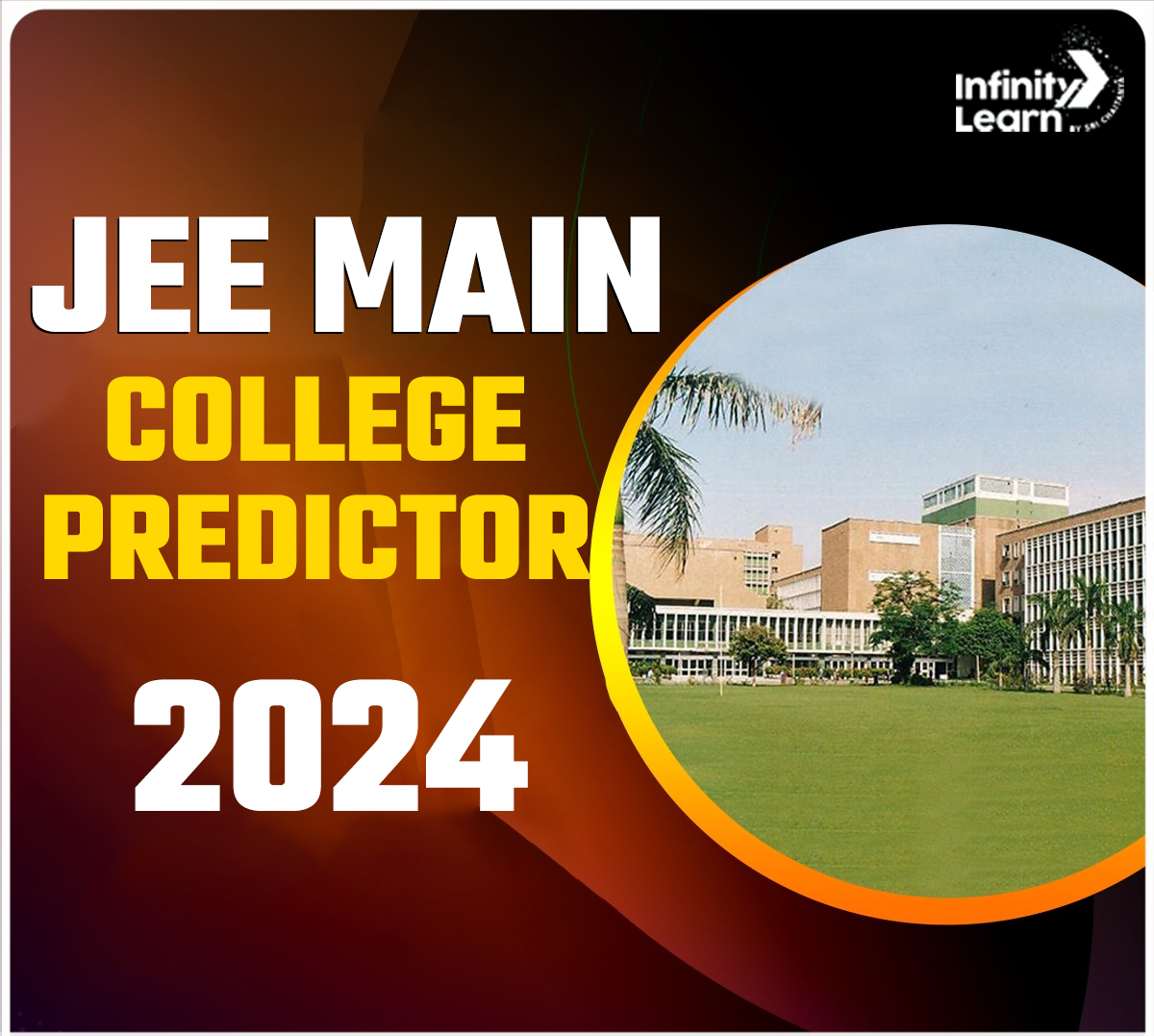Table of Contents
JEE Main College Predictor 2024: The JEE Main College Predictor 2024 is a tool created to help students assess their chances of admission based on their rank, percentile, home state, and gender. This tool considers data from 1623 B.Tech and 53 B.Arch colleges, using previous years’ opening and closing ranks provided by JoSAA. It then provides students with a reasonably accurate list of top B.Tech/B.Arch colleges where they might be admitted. Many students are interested in their chance of getting into NITs, IIITs, GFTIs, or other state engineering colleges after taking the JEE Main 2024 exam.
The JEE Main College Predictor 2024 lists the top B.Tech/B.Arch colleges based on a student’s JEE Main rank or percentile. To get the results, students only need to enter their rank/percentile and gender into the JEE Main College Predictor tool. Students can use JEE Main College Predictor 2024 Free. As per trends from previous years, students with a JEE Main rank below 5000 may have opportunities for admission to the top five NITs in India. Read this article for complete details about the JEE Main College Predictor 2024.
JEE Main College Predictor 2024 Free

Candidates can utilize the JEE Main College Predictor 2024 Free by following a few straightforward steps. It is recommended to have their JEE Main percentile available to explore the probable list of colleges. Here are the steps to use the JEE Mains College Predictor By Percentile:
- Choose the counseling process.
- Input the JEE Main overall percentile.
- Specify your home state and caste group.
- Indicate your gender and whether you have any special abilities.
- Click on the ‘Predict My College’ tab.
The screen will then display a list of the best-estimated colleges. The JEE Mains college predictor by percentile tool is designed solely for predicting potential colleges. The actual college allotment during the JoSAA counseling may vary.
Click Here: JEE Mains Rank Predictor 2024
JEE Main 2024 Marks vs Percentile vs Rank
Students must enter their rank and category to see their results with the JEE Main College Predictor 2024. The expected relationship between JEE Main 2024 Marks, Rank, and Percentile is provided so that students can understand their likely rank and percentile based on their JEE Main scores. Additionally, students can check JEE Main Marks vs Rank 2024 using past year data, which helps them estimate the rank they might achieve based on their performance in the JEE Main exam. The JEE Main 2024 Marks vs Percentile vs Rank is given below.
| JEE Main Score (Out of 300) | Percentile | Rank |
| 286 – 292 | 99.99 – 99.99 | 12 – 19 |
| 280 – 284 | 99.99 – 99.99 | 23 – 42 |
| 268 – 279 | 99.99 – 99.99 | 64 – 106 |
| 250 – 267 | 99.95 – 99.99 | 108 – 524 |
| 231 – 249 | 99.87 – 99.95 | 546 – 1385 |
| 215 – 230 | 99.74 – 99.87 | 1421 – 2798 |
| 200 – 214 | 99.57 – 99.73 | 2863 – 4667 |
| 189 – 199 | 99.39 – 99.56 | 4830 – 6664 |
| 175 – 188 | 99.02 – 99.34 | 7152 – 10746 |
| 160 – 174 | 98.52 – 98.99 | 11018 – 16163 |
| 149 – 159 | 98.07 – 98.49 | 16495 – 21145 |
| 132 – 148 | 97.01 – 97.97 | 22238 – 32826 |
| 120 – 131 | 96.06 – 96.95 | 33636 – 43174 |
| 110 – 119 | 95.05 – 95.98 | 44115 – 54293 |
| 102 – 109 | 94.01 – 94.96 | 55269 – 65758 |
| 95 – 101 | 93.05 – 93.89 | 66999 – 76260 |
| 89 – 94 | 92.05 – 92.88 | 78111 – 87219 |
| 79 – 88 | 90.04 – 91.79 | 90144 – 109329 |
| 62 – 87 | 84.56 – 91.59 | 92303 – 169542 |
| 41 – 61 | 70.26 – 84.22 | 173239 – 326517 |
| 1 – 40 | 6.67 – 69.57 | 334080 – 1025009 |
JEE Main College Predictor 2024- Previous Year’s JEE Main Qualifying Marks
The JEE Mains cut off vary every year. Students can get an estimate regarding the JEE Mains cut-off from the previous year’s cut-off. The list of previous year’s JEE Main Qualifying Marks is given below in the table.
| JEE Main College Predictor 2024- Previous Year’s JEE Main Qualifying Marks | |||||
| Category | 2019 | 2020 | 2021 | 2022 | 2023 |
| General | 89.7549 | 90.3765 | 87.8992 | 88.4121 | 90.7789 |
| Gen-PwD | 0.113717 | 0.061852 | 0.009638 | 0.003103 | 0.001352 |
| EWS | 78.2175 | 70.2436 | 66.2215 | 63.1114 | 75.6229 |
| OBC-NCL | 74.3167 | 72.8888 | 68.0234 | 67.0090 | 73.6114 |
| SC | 54.0128 | 50.1760 | 46.8825 | 43.0821 | 51.9776 |
| ST | 44.3345 | 39.0696 | 34.6729 | 26.7771 | 37.2349 |
How Does the JEE Main College Predictor Work?
The JEE Main College Predictor 2024 utilizes a refined algorithm that considers various factors to estimate a student’s JEE rank. The process involves the following steps:
- Input of Performance Data: Enter your scores and detailed performance information from mock tests or practice exams. This includes subject-wise scores, the number of questions attempted, and your overall test-taking approach. This data forms the basis for the predictor’s algorithms, enabling accurate predictions regarding your potential JEE ranking.
- Data Analysis: The JEE Main College Predictor 2024 compares your performance data with historical JEE Main data. This evaluation aligns your results with past years’ JEE data and then provides a detailed assessment of historical cutoff scores and insights into the competitive landscape.
- Rank Estimation: Building on the data analysis, the JEE Main College Predictor 2024 calculates an estimated JEE rank for you. It provides a range to account for uncertainties and variations. The JEE Main College Predictor 2024 uses advanced data analysis techniques to determine an estimated JEE rank and presents a range of possible ranks to consider due to potential uncertainties and variations in the calculation.
- Percentile Score: The JEE Main College Predictor provides a percentile score and offers insight into your relative performance compared to other students. This percentile score is essential, providing a precise measure of your performance compared to your peers. It helps you understand your standing within the broader student community and where you fall in the achievement range.
- College Prediction: The JEE Main College Predictor considers factors like the previous year’s cutoffs, the number of available seats in various colleges, and the candidate’s rank. By analyzing this information, the JEE Main College Predictor generates a list of colleges where the student may have a chance of admission and offers valuable insights into potential options based on their JEE Main rank.

JEE Foundation Class for 10
JEE Foundation Class for 10 enhances critical thinking and problem-solving skills through engaging activities and advanced learning techniques, ensuring academic excellence.
Parameter of JEE Main Rank Prediction 2024
JEE Main Rank Prediction 2024 considers several key factors. The Parameter of JEE Main Rank Prediction 2024 is given below.
- Candidate’s category.
- Candidate’s score.
- Total number of questions answered by the candidate.
- Difficulty level of the examination.
- Total number of applicants.
- Comparison of previous year’s JEE Main marks with corresponding ranks.
JEE Main College Predictor 2024 Benefits
The JEE Main College Predictor 2024 tool helps students address concerns about choosing colleges based on their JEE scores and the allocation of colleges during the JEE Main Counselling Process 2024. Using advanced AI, the JEE Main College Predictor 2024 predicts numerous engineering colleges where students may be admitted to India.
With data from over a thousand engineering colleges, it considers parameters such as JEE Main result, home state, gender, and category. Early awareness of potential colleges allows students to assess factors like courses, resources, fees, levels, placement, and more, aiding informed decision-making.
JEE Main College Predictor 2024 FAQs
What is considered a good score for JEE 2024, and what percentile is optimal for NITs' and IITs' admission?
JEE Mains score of 250 or above is considered good, and an optimal percentile falls from 85 to 95 for admission to NITs and IITs.
How many students appeared for the JEE 2024 exam?
This year, 12,25,529 students participated in the NTA JEE Mains 2024 exam.
Is JEE 2024 expected to be challenging?
Although the NTA has reduced the JEE Main Syllabus for 2024, the syllabus only partially determines the difficulty level of the paper, and it may still pose a challenge for candidates despite the reduction in topics.








